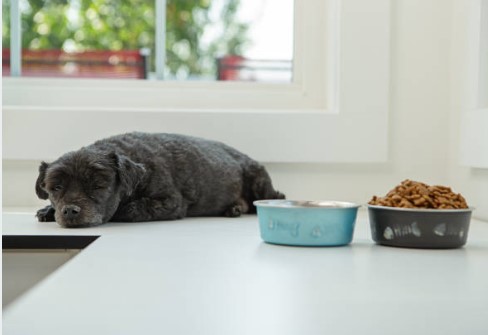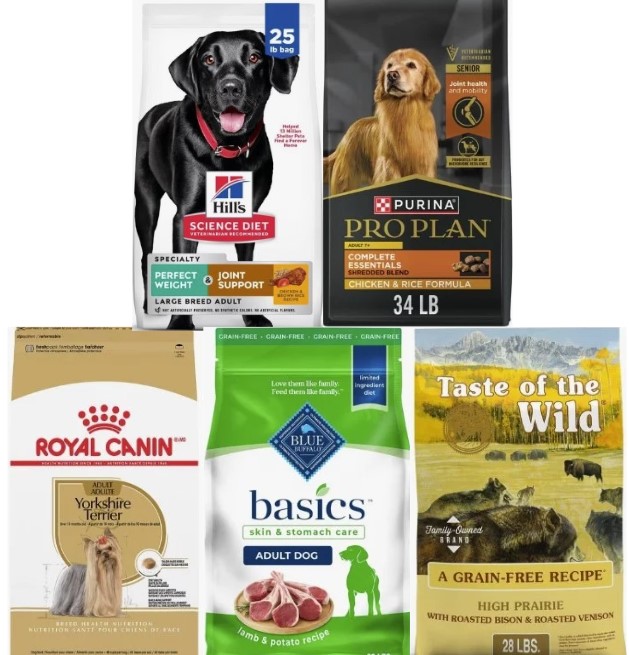Ever find yourself staring at your dog, bowl untouched, while they give you that all-too-familiar “nottoday” look? Is your dog a picky eater? Many dogs can be surprisingly selective about their food. But what makes them so picky? And when does it shift from personality to a potential problem? Understanding the “why” behind your dog’s eating habits is the first step in addressing them—and yes, improving their mealtime experience.
There’s no universal answer to why some dogs are fussy about food. What’s clear, however, is that it can stem from health, behavior, or dietary changes.
One of the first things to consider is whether there’s an underlying medical issue at play. Your pup can’t exactly hop on a call with the vet to say their teeth hurt or their stomach feels off. But these concerns can absolutely interfere with their appetite.
- Dental problems: Broken teeth, gingivitis, or mouth sores can make chewing painful.
- Digestive issues: Acid reflux, food sensitivities, or an upset stomach might make them wary of mealtime.
- Chronic conditions: Conditions like kidney disease, diabetes, or even certain infections can reduce appetite. Always watch for accompanying symptoms, like lethargy or vomiting.
It’s worth noting that skipping meals occasionally isn’t unusual, but turning their nose up regularly could signal something more serious.

Picky eating isn’t always about medical concerns. Sometimes, your dog’s preferences are shaped by their environment, habits, or even past experiences.
- Spoiled for choice: If your dog gets too many treat options—or scraps from the dinner table—they might hold out for something “better.”
- Feeding environment: Chaos during meals can distract or stress them. Loud noises or sharing space with other pets can disrupt good eating habits.
- Past trauma: Rescue dogs, especially those who’ve lived in challenging circumstances, may develop anxiety around food. They could associate eating with negative experiences, making it harder for them to settle.
Dogs, like humans, have their quirks when it comes to food. They also thrive on routine. Abrupt changes in diet can throw things off, even if the food itself seems high-quality.
- Sudden switch: Gradual transitions between foods are key. Jumping directly from one kibble brand to another may upset their stomach or make them wary of the new flavor.
- Texture and taste: Believe it or not, some dogs prefer kibble over wet food—or vice versa. Others lean toward specific flavors like chicken over beef. Experimenting here (in moderation) can shed light on their preferences.
Before you start assuming your fur baby is just high-maintenance, it’s essential to figure out if their behavior points to something deeper.

Keep an eye on their meals over a few days. Note how much they eat, when they eat, and whether they ignore the same foods consistently. This not only highlights potential habits but can also help rule out food aversion caused by illness.
Ask yourself:
- Are they skipping meals entirely or grazing throughout the day?
- Do they eat more if you hand-feed them or modify the presentation?
- Are they avoiding specific textures, like dry kibble, but still eating treats?
A simple log of these behaviors can help narrow down the root cause.
While picky eating itself might not be cause for alarm, certain red flags mean it’s time to check in with your vet. Look out for:
- Sudden weight loss
- Vomiting or diarrhea lasting more than a day
- Increase in lethargy or unusual behavior
- Refusal to eat for over 24 hours (especially puppies)
Veterinarians can assess for underlying health problems and provide tailored advice for your dog’s specific needs.
Once you’ve ruled out major concerns, it’s time to start reshaping your dog’s eating habits. This takes patience, but consistency is key.
Dogs thrive on schedules. Feed them at the same time each day and eliminate free-feeding habits. Offer their food for 20 minutes. Whatever they don’t eat gets taken away. Not only does this create structure, but it also teaches them that food won’t always be available on demand.
Make meals predictable:
- Use the same bowl or location each day.
- Limit distractions like loud TV or other pets vying for attention.
Your pup might have a hidden favorite food you’ve yet to discover. Slowly introduce new options and flavors (while keeping their nutritional needs balanced).
Pro tips for transitioning foods:
- Replace 25% of their current food with new food for the first few days.
- Gradually increase the ratio until it’s 100% the new diet over about a week.
- Watch for stomach upset during this transition, as it may require slowing down.
Here’s where many pet owners unknowingly slip up. Feeding table scraps, offering too many treats, or giving in to their refusal to eat only reinforces picky behavior.
Instead:
- Resist the urge to cater to their whims mid-meal.
- Avoid treats as a substitute for uneaten meals.
- Stay firm without guilt—they’re not starving; they’re strategizing.
Sometimes, picky eating goes beyond what homemade solutions can fix. That’s when turning to experts or exploring specialized diets becomes the best course of action.
A professional can assess whether your dog’s diet meets their specific needs. They can also recommend physiological or psychological interventions if picky eating stems from a deeper issue. Nutritionists can craft plans tailored explicitly for your dog, considering breed, age, and activity level.
For dogs with food allergies, digestive disorders, or chronic illnesses, special diets can make a world of difference. Hypoallergenic foods, limited ingredient diets, or medically-prescribed formulas tackle these specific concerns while keeping your dog happy and healthy.
Discover more from Beautiful over 40ish
Subscribe to get the latest posts sent to your email.

